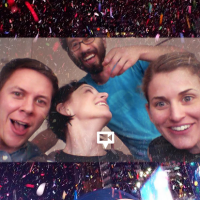Will Google Glass Be a Success with Consumers?

Ever since Google announced its foray into wearable computing with Google Glass, it has been getting a great deal of attention in technology circles. According to some reports, Glass is predicted to be “the next iPhone.” Will Glass live up to these high expectations?
According to a trend report, around 21.6 million online consumers in the United States—roughly 12 percent of the population—are interested in wearing Glass and similar products. At the moment, it is being beta-tested by early adopters—with the release due sometime in 2014. Looking at the cool features that Glass brings, there are clear indicators that a lot is going right for Glass.
However, amid all the hype, there is an alternate way to look at how new innovations get adopted by customers. In his Harvard Business Review study titled "Eager Sellers Stony Buyers: Understanding the Psychology of New-Product Adoption," John T. Gourville says this about the psychology of new product adoption: "Many innovations fail because consumers irrationally overvalue the old and companies irrationally overvalue the new."
The study further leads to The 9x Effect, which effectively states that customers outweigh the incumbent product's benefits by a factor of three, and companies outweigh the new product's benefits by a factor of three.
Basically customers tend to give more weight to what they stand to lose by adopting a new product rather than what they stand to gain. This, however, will not entirely hold good for early adopters of the innovation, who usually are the people who buy products for the love of new technology.
One potential impact on Glass can be understood by drawing parallels with Segway, a two-wheeled, self-balancing, battery-powered electric vehicle. It was backed by legendary icons Jeff Bezos and Steve Jobs to be a grand success as an alternate means of transportation, possibly eliminating the need to walk short distances.
This innovation failed to be a huge success with possible reasons being no clear need or target market. Customers seemed to not appreciate this idea—probably preferring what they had and to not lose the health benefits of walking.
If we apply the same thinking to Glass, consumers may perceive it as a form of computing that interferes with one of the most basic human body functions—seeing without any interruptions to the eye. In other words, despite the other benefits that Glass brings, consumers may prefer to not lose the benefits of flawlessly seeing the surroundings.
Further, the adoption of voice commands from various cultures and in various languages worldwide may pose a technical challenge. The translation technology is still not mature enough to yield accurate results.
There is a fundamental difference between the adoption of Glass and iPhone. When iPhone was launched in 2007, there was already a market for smartphones created by other vendors; Google is setting out to create a new market for wearables. It’s an exciting area, but given the market dynamics, it makes the mass adoption of Glass equally challenging.
What do you think?

